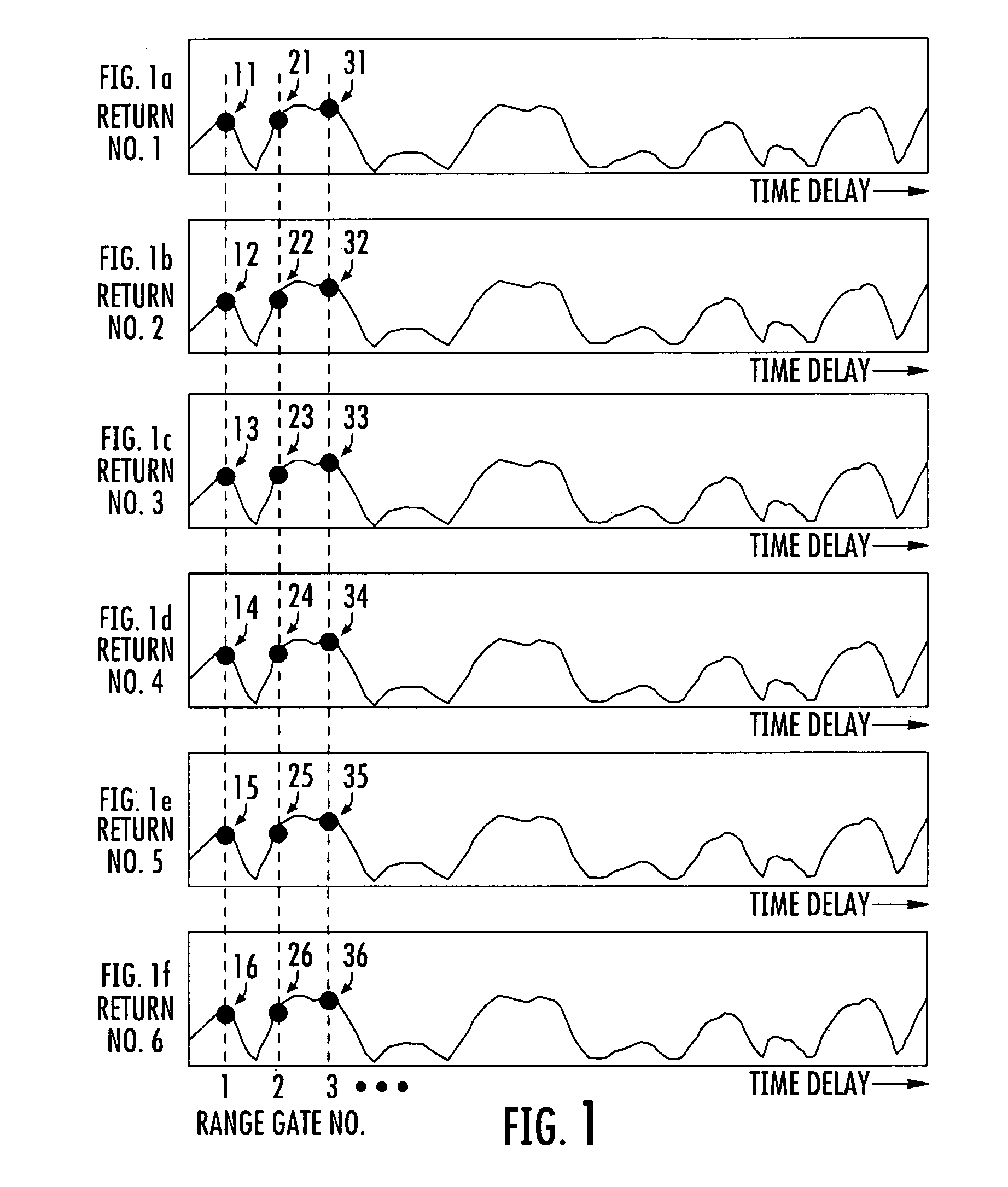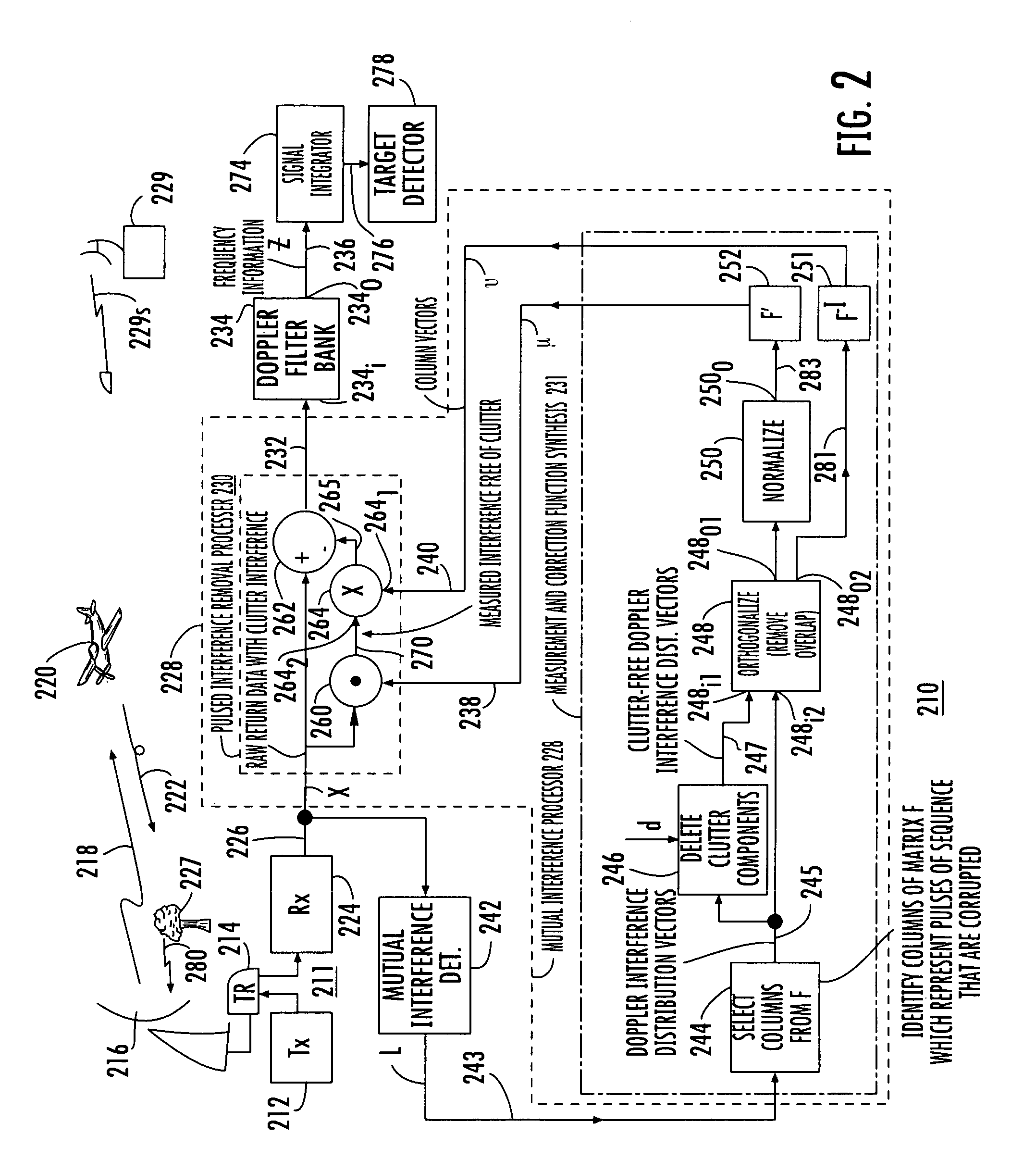Mutual interference processor for pulse radar
a pulse radar and processor technology, applied in the field of interference suppression in sensors, can solve problems such as contamination of received energy signals, and achieve the effects of reducing the effect of pulsed interference, removing or reducing pulsed interference, and removing or reducing clutter signals
- Summary
- Abstract
- Description
- Claims
- Application Information
AI Technical Summary
Benefits of technology
Problems solved by technology
Method used
Image
Examples
Embodiment Construction
[0016]This invention tends to reduce or remove pulsed interference by a process that is compatible with pulse-Doppler filter suppression of clutter signals, and thereby maintains radar target detection sensitivity during combined clutter and pulsed interference conditions.
[0017]In general, pulse-Doppler radar signals consist of trains or time-series sequences of signals, such as pulses, that can be used to measure the Doppler frequencies of target objects in order to filter clutter signals from target signals. In a typical operating scenario, after the first pulse is transmitted, its reflected signal return is then received until the time at which the second pulse is transmitted. After the second pulse is transmitted, its reflected signal return is then received until the time at which a third pulse is transmitted. This transmission and reception cycle is continued until all pulses in the sequence are transmitted and received. Alternatively, several or all pulses in the sequence may...
PUM
 Login to View More
Login to View More Abstract
Description
Claims
Application Information
 Login to View More
Login to View More - R&D
- Intellectual Property
- Life Sciences
- Materials
- Tech Scout
- Unparalleled Data Quality
- Higher Quality Content
- 60% Fewer Hallucinations
Browse by: Latest US Patents, China's latest patents, Technical Efficacy Thesaurus, Application Domain, Technology Topic, Popular Technical Reports.
© 2025 PatSnap. All rights reserved.Legal|Privacy policy|Modern Slavery Act Transparency Statement|Sitemap|About US| Contact US: help@patsnap.com



